Perot Museum of Nature and Science
Photos from Bill Larson, Pala International,
and Rob Lavinsky, The Arkenstone
On December 1, 2012, after years of planning and construction, the Perot Museum of Nature and Science opened to the public. On January 8, 2013, despite sold-out crowds at the museum, Pala’s Bill Larson was able to take in the museum, providing us with the following report.
I was visiting the Dallas area, pre-Tucson show, when I realized I could probably make time to see the new Perot Nature and Science Museum. I was informed that it was sold out, but Rob Lavinsky sent an email and obtained an invite for me for Tuesday, January 8.
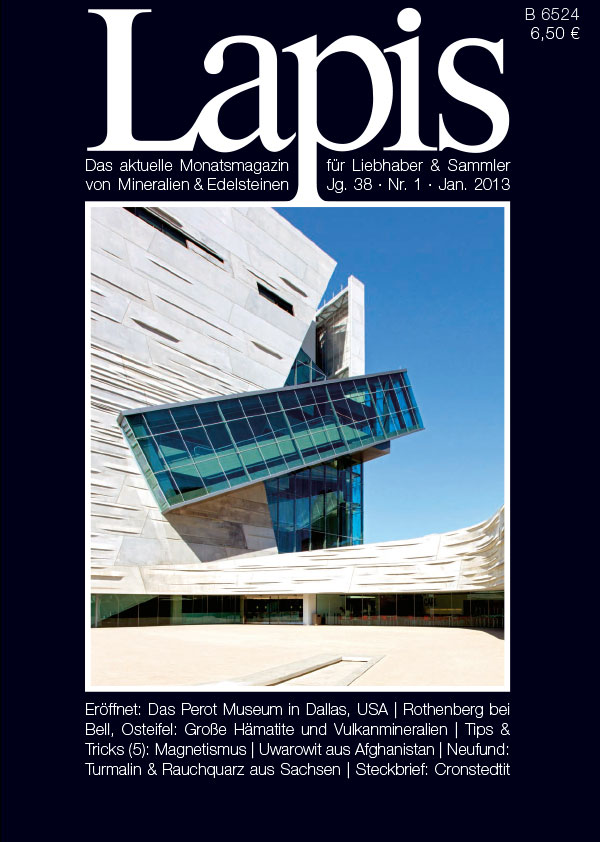 |
| Das Perot Museum. An image of the museum plaza graces the cover of the January 2013 edition of Lapis. (Cover photo: Mark Knight Photography) |
The building’s architecture is already famous in the downtown area, and as I parked I could see why: very bold design. I went to the concierge desk and was given my ticket and told the mineral exhibit was on the third floor. On Level 3, I walked into the Rees-Jones Foundation Dynamic Earth Hall. I found the Lyda Hill Gems and Minerals Hall easily in the center and noted this display was really busy. Nicely laid out. Good flow for traffic.
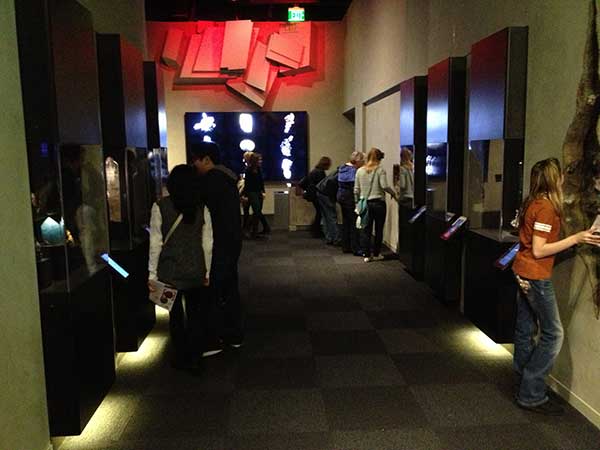 |
| Well attended. Advance tickets are a must for the museum. (Photo: Bill Larson) |
The entrance to the hall is one of my favorite drawing cards to the new Perot Museum’s mineral displays. The ceiling is covered in a whimsical re-creation of a pyrite cluster that cascades down the sides and is viewable upon entry or exit. The museum’s displays department has recreated several whimsical clusters of quartz or various crystal models near the ceiling; it gives the visiting children a feeling of fantasy and fun, while seeing the reality in the displays or computer programs.
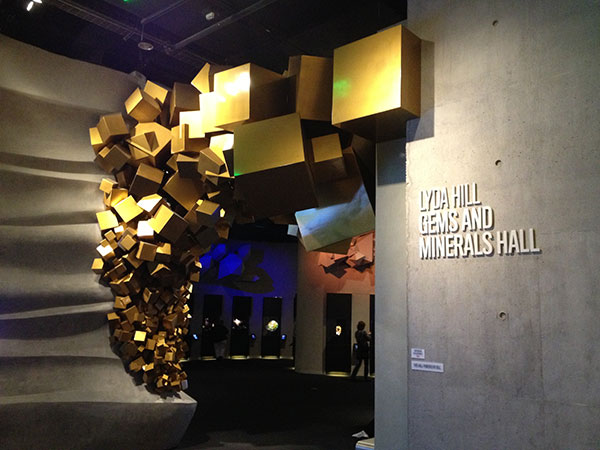 |
| Pyrite portal. The entrance to the hall. (Photo: Bill Larson) |
I got down to the serious business of looking and photographed each display. I noted immediately that each case was accompanied by an electronic label that was interactive. It could display a picture of any mineral in the exhibit, providing you with the description, location and even the owner.
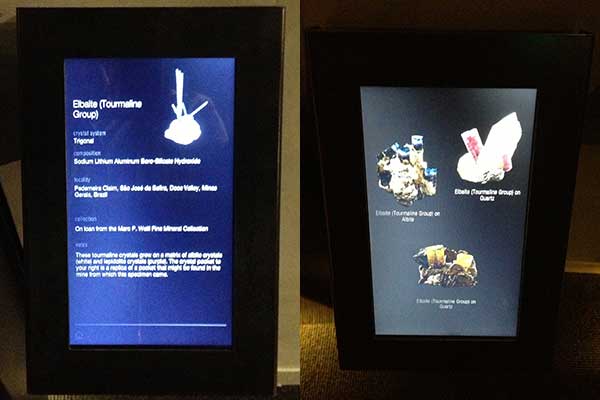 |
| eLabels. Two views of the labels and interactive displays. (Photos: Bill Larson) |
What became obvious was that this is a community effort; all the minerals on display here are on loan, with perhaps the exception of the amazing central amethyst geode which is truly one of the greatest displays for crystals I’ve ever seen. I took a video to show how the mechanics work. The piece was opened and closed perhaps 40 or 50 times while I was on my two-hour-or-so visit. Children from the age of 2 to youngsters of 70 were seen enjoying and using the mechanics.
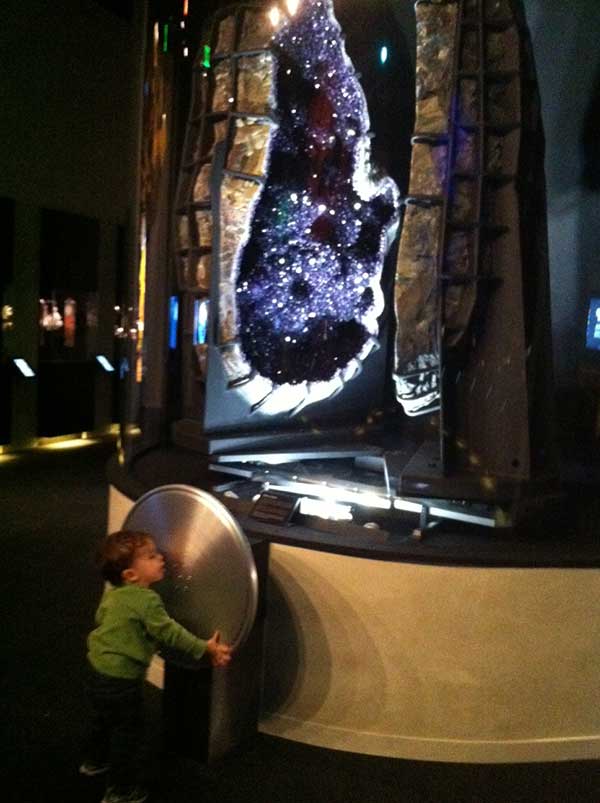 |
| Wheeler-dealers. Above, 26-pound Logan Lavinsky has no problem opening and closing the 3000-kilo amethyst geode, the centerpiece of the Lyda Hill Gems and Minerals Hall. (Photo: Rob Lavinsky) Below, see the geode in action via streaming video. (Video: Bill Larson) |
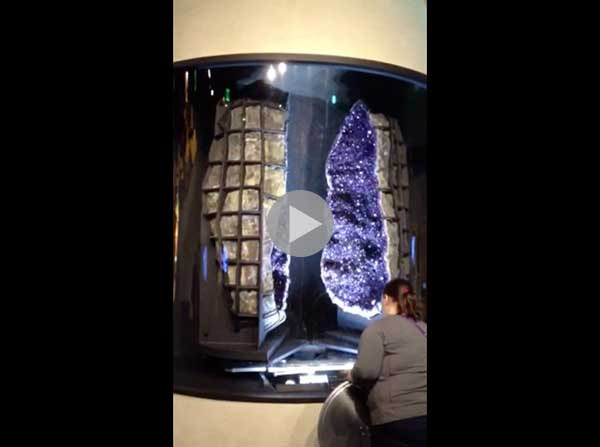 |
There were also several interactive computer displays explaining what a mineral was, the planet Earth, the science of minerals, sponsored by friends of the Mineral Association of Dallas. This truly is an amazing community effort and a beautiful display and one that all mineral enthusiasts should add to their need-to-visit list.
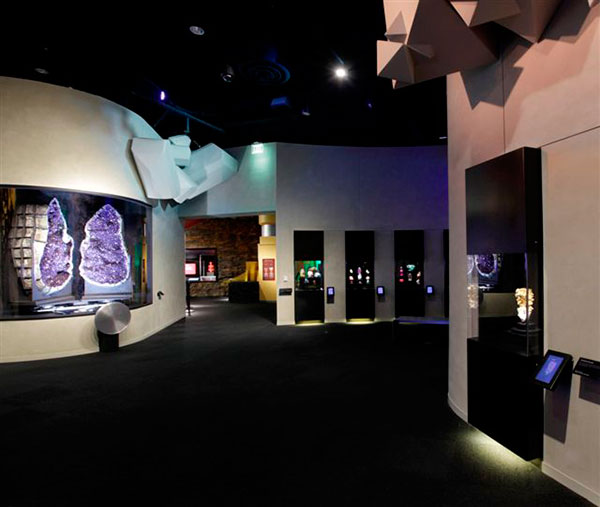 |
| Two views of the Lyda Hill Hall of Gems and Minerals. (Photos: Mark Knight Photography) |
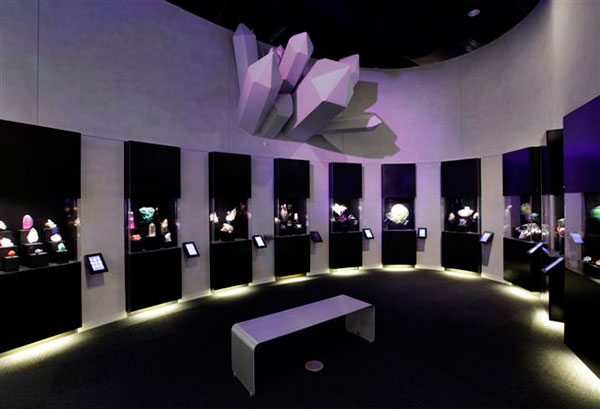 |
I did note that there were no gemstones on display as of yet and was told that they’re hoping for a similar outreach into the community, and perhaps even farther, for persons who would loan exceptional gemstones to help expand the Lyda Hill Hall of Gems and Minerals.
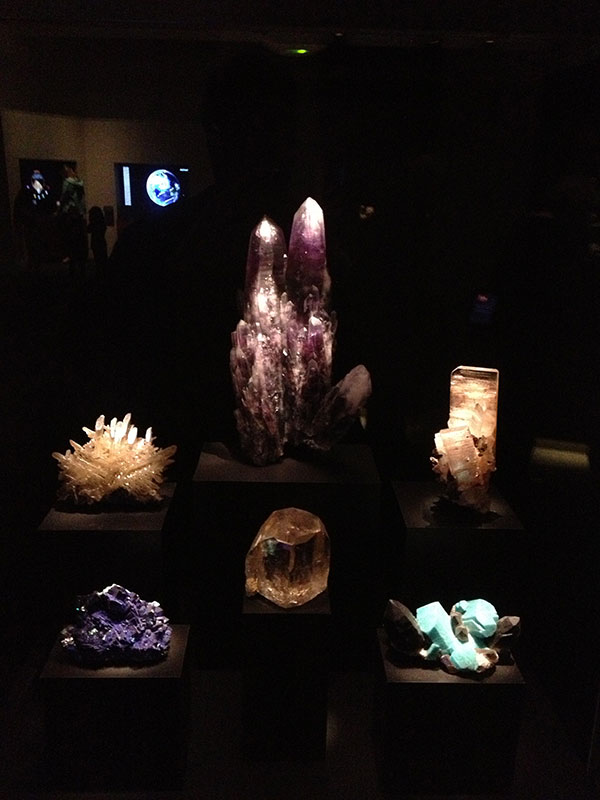 |
| Fancy seeing you here. This topaz from Burma, center, was contributed by Pala International. (Photo: Bill Larson) |
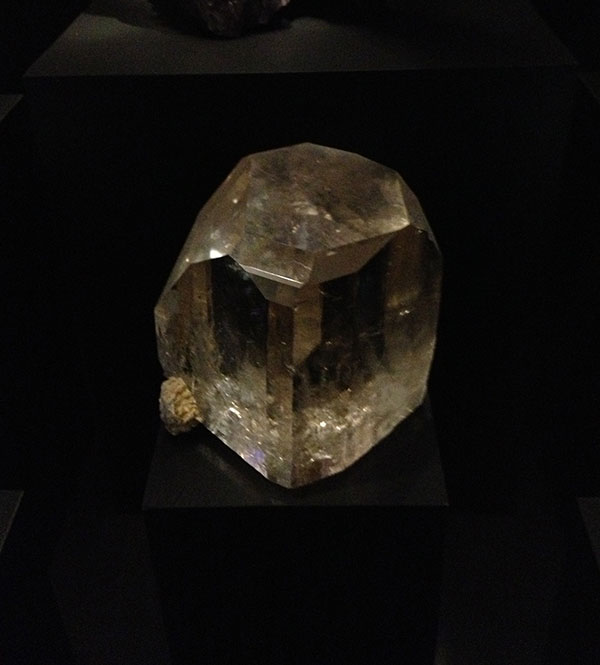 |
My one criticism is that, while the displays are beautifully laid out, and the minerals are quite extraordinary, it seems that the lighting is perhaps too subtle and could be improved with more wattage.
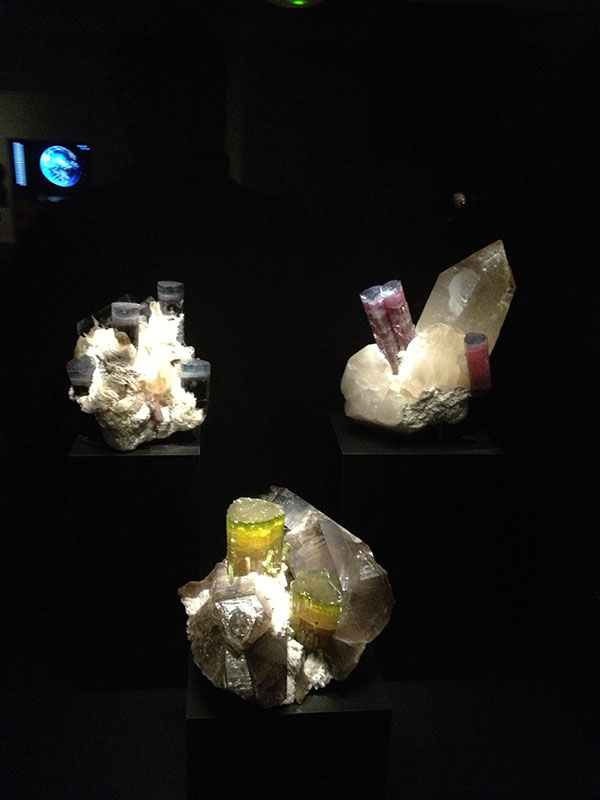 |
| Tourmaline in varying hues. (Photo: Bill Larson) |
 |
Since this is a collection on loan we can expect the displays to be revolving and changing. I do not know the length the current displays are committed for; usually two years is planned. Hopefully the fame of the museum will become a draw from not only the local community but from far and wide to keep the quality high.
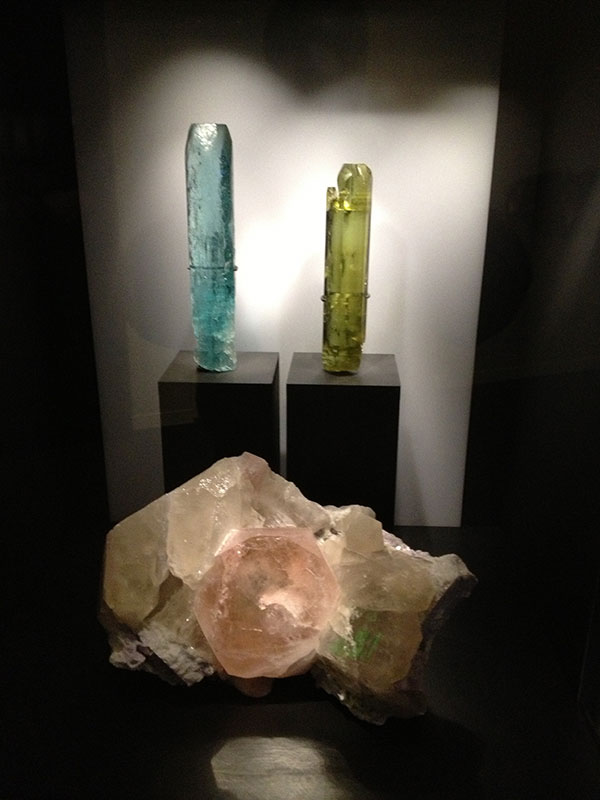 |
| Beryl on display. (Photo: Bill Larson) |
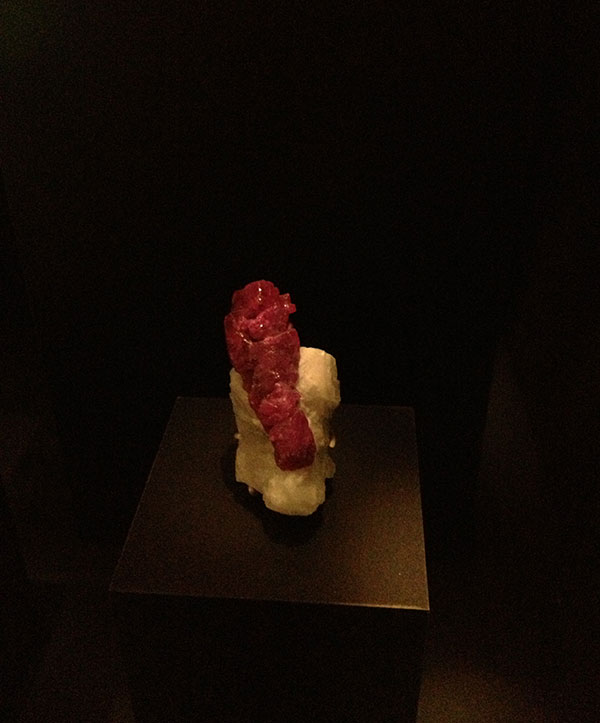 |
| Hey, old friend. Another Pala piece, ruby from Burma. (Photo: Bill Larson) |
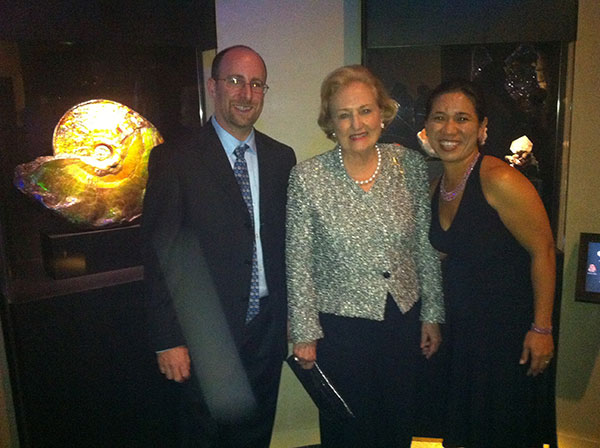 |
| Margot Perot is flanked by Rob and Bailey Lavinsky as they admire an ammonite. The museum is named after Margot and Ross Perot, whose children donated a combined $50 million to the project. (Photo courtesy Rob Lavinsky) |